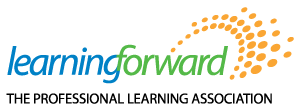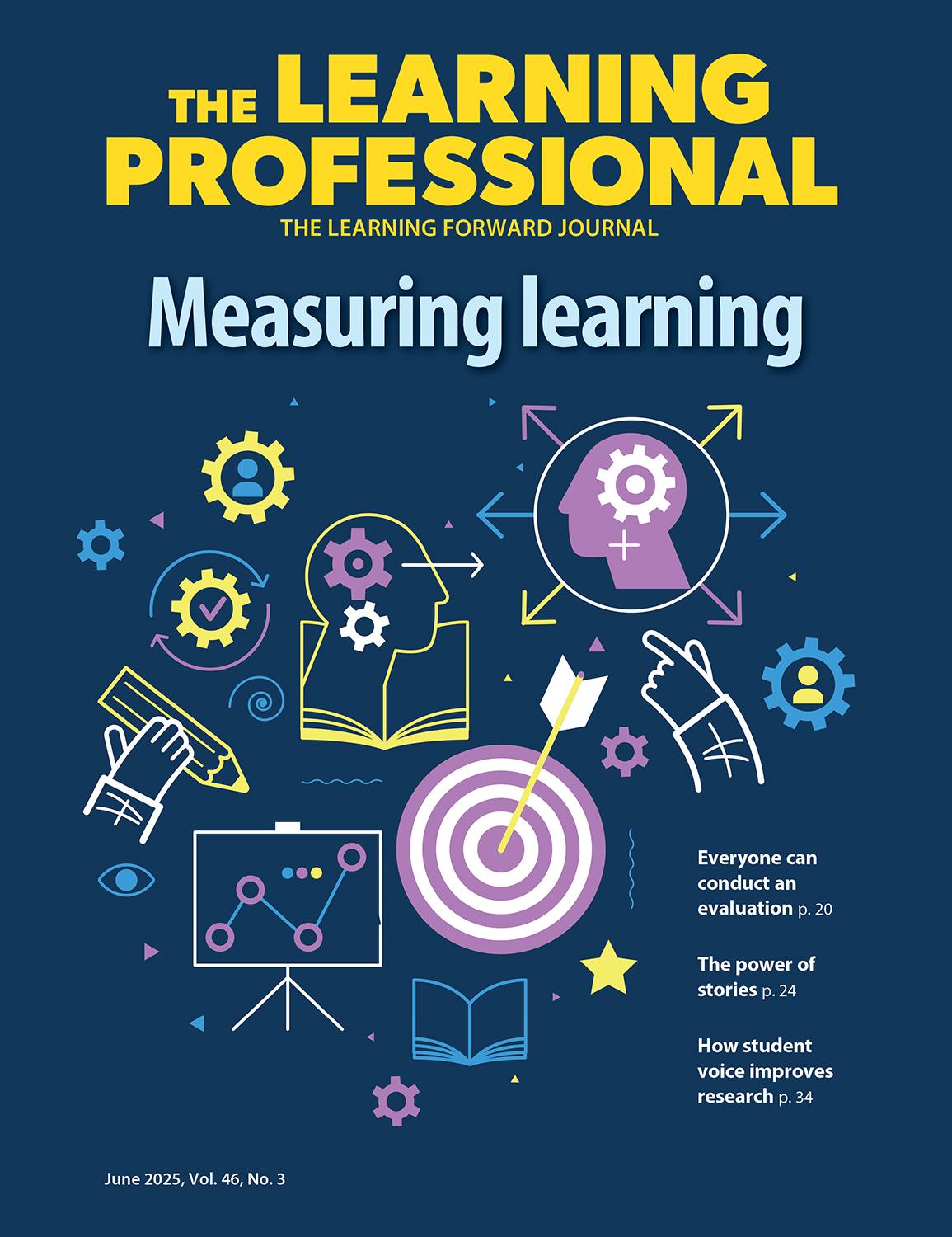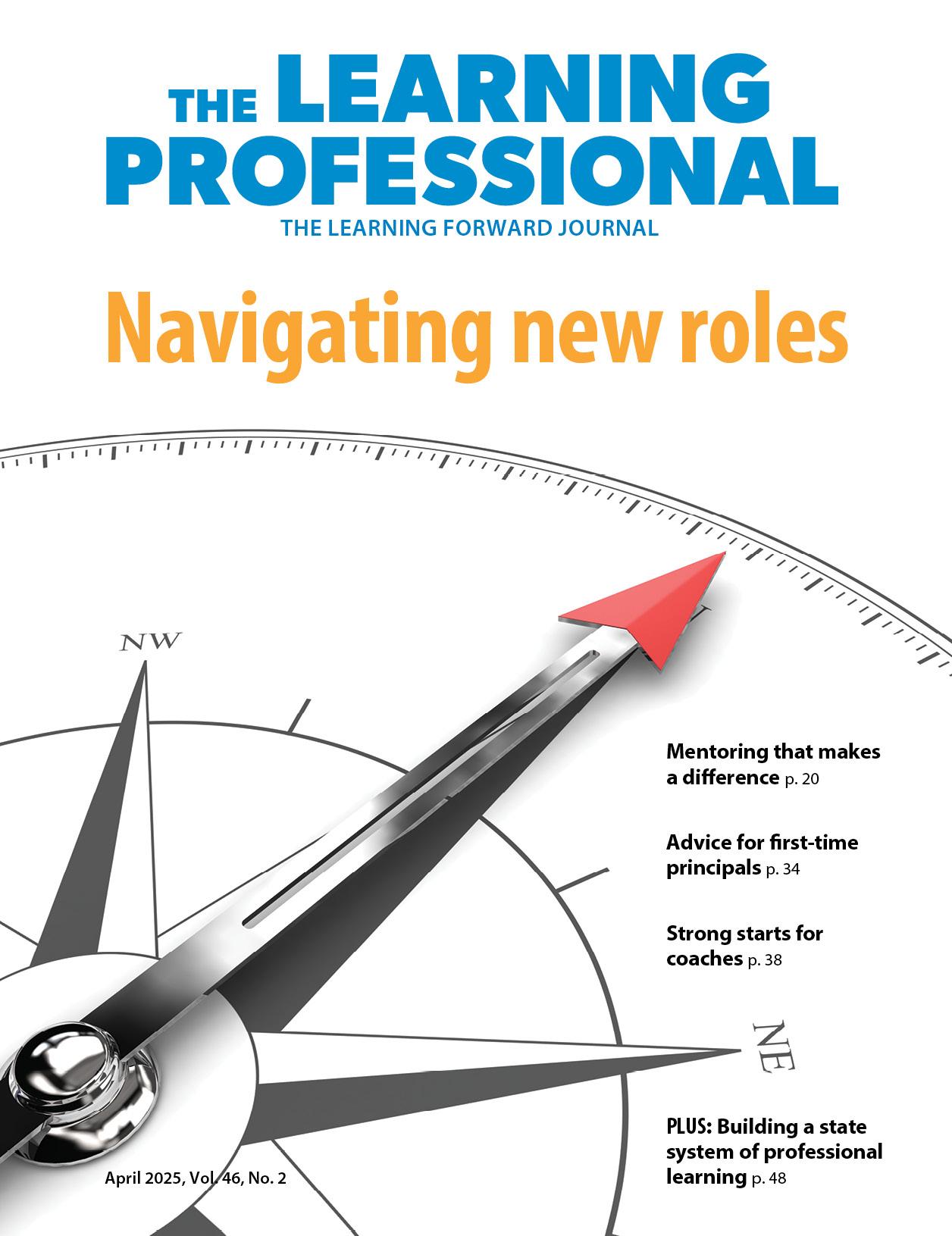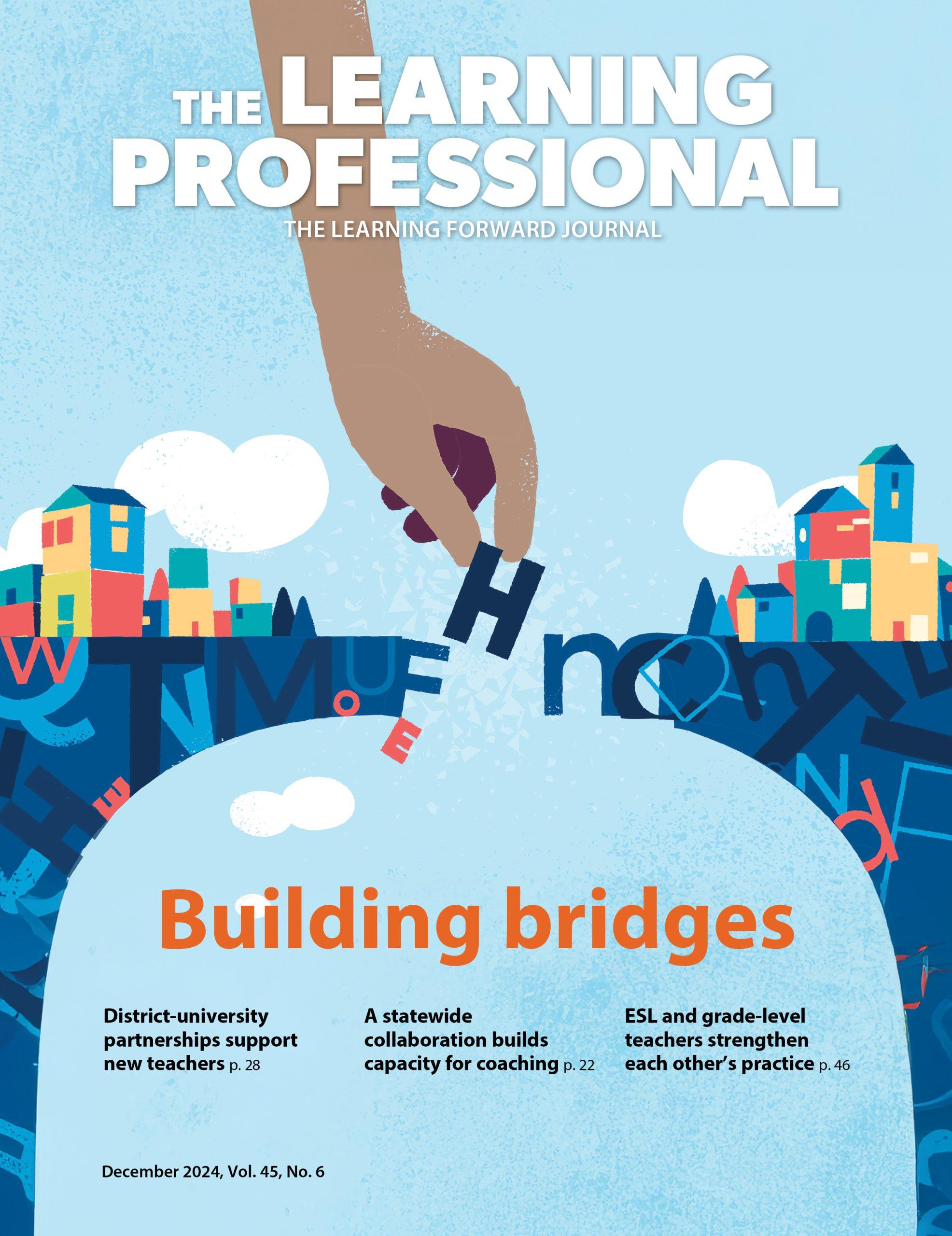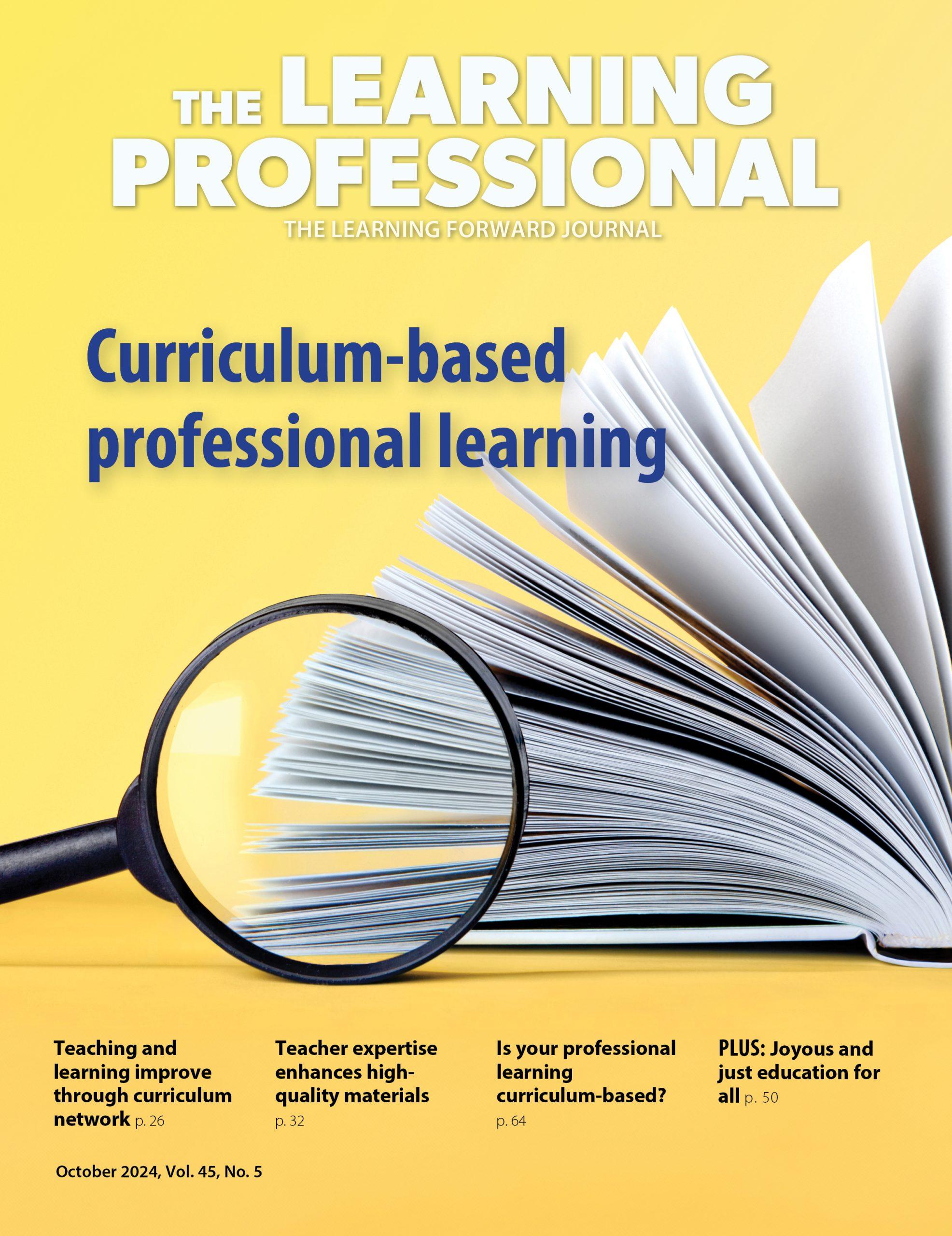IDEAS
Multilingual students benefit when grade-level and specialist teachers collaborate
By Leslie M. Babinski, Steven J. Amendum, Steven E. Knotek and Jennifer C. Mann
Categories: Collaboration, English learners, Teacher leadershipDecember 2024
Read the remaining content with membership access. Join or log in below to continue.
Sed ut perspiciatis unde omnis iste natus error sit voluptatem accusantium doloremque laudantium, totam rem aperiam, eaque ipsa quae ab illo inventore veritatis et quasi architecto beatae vitae dicta sunt explicabo. Nemo enim ipsam voluptatem quia voluptas sit aspernatur aut odit aut fugit, sed quia consequuntur magni dolores eos qui ratione voluptatem sequi nesciunt. Neque porro quisquam est, qui dolorem ipsum quia dolor sit amet, consectetur, adipisci velit, sed quia non numquam eius modi tempora incidunt ut labore et dolore magnam aliquam quaerat voluptatem.
References
Babinski, L., Amendum, S., Carrig, M., Knotek, S., Mann, J., & Sánchez, M. (2024a). Professional learning for ESL teachers: A randomized controlled trial to examine the impact on instruction, collaboration, and cultural wealth. Education Sciences, 14(7), 690. doi.org/10.3390/educsci14070690
Babinski, L.M., Amendum, S., Carrig, M., Knotek, S., & Sánchez, M. (2024b). Teaching young multilingual learners: Impacts of a professional learning program on teachers’ practices and students’ language and literacy skills [Manuscript under review].
Babinski, L.M., Amendum, S., Knotek, S., Sánchez, M., & Malone, P. (2018). Improving young English learners’ language and literacy skills through teacher professional development: A randomized controlled trial. American Educational Research Journal, 55(1), 117-143.
Baker, S., Lesaux, N., Jayanthi, M., Dimino, J., Proctor, C.P., Morris, J., Gersten, R., Haymond, K., Kieffer, M.J., Linan-Thompson, S., & Newman-Gonchar, R. (2014). Teaching academic content and literacy to English learners in elementary and middle school (NCEE 2014-4012). National Center for Education Evaluation and Regional Assistance, Institute of Education Sciences, U.S. Department of Education.
Cain, K. (2015). Literacy development. The interdependent roles of oral language and reading comprehension. In R.H. Bahr & E.R. Silliman (Eds.), Routledge Handbook of Communication Disorders (pp. 204-214). Routledge.
Desimone, L.M. (2009). Improving impact studies of teachers’ professional development: Toward better conceptualizations and measures. Educational Researcher, 38(3), 181-199.
Johnson, T. & Wells, L. (2017). English language learner teacher effectiveness and the Common Core. Education Policy Analysis Archives, 25(23). doi.org/10.14507/epaa.25.2395
Learning Forward. (2022). Standards for Professional Learning.
National Center for Education Statistics. (2022). English learners in public schools: Condition of education. U.S. Department of Education, Institute of Education Sciences.
Northwest Evaluation Association. (2011). Technical manual: For Measures of Academic Progress (MAP) Measures of Academic Progress for Primary Grades (MPG). Author.
Schrank, F.A., McGrew, K.S., & Dailey, D.E.H. (2010). Woodcock-Muñoz Language Survey – Revised Normative Update. Riverside Publishing.
Snow, C.E. & Matthews, T.J. (2016). Reading and language in the early grades. The Future of Children, 26(2), 57-74.
U.S. Government Accountability Office. (2009, July). Teacher preparation: Multiple federal education offices support teacher preparation for instructing students with disabilities and English language learners, but systematic department-wide coordination could enhance this assistance (Publication No. GAO-09-573). Author.
Yosso, T. (2005). Whose culture has capital? A critical race theory discussion of who has wealth. Race, Ethnicity and Education, 8(1), 66-91.
Categories: Collaboration, English learners, Teacher leadership
Recent Issues
NAVIGATING NEW ROLES
April 2025
Whether you’re new to your role or supporting others who are new,...
LEARNING DESIGNS
February 2025
How we learn influences what we learn. This issue shares essential...
BUILDING BRIDGES
December 2024
Students benefit when educators bridge the continuum of professional...
CURRICULUM-BASED PROFESSIONAL LEARNING
October 2024
High-quality curriculum requires skilled educators to put it into...
